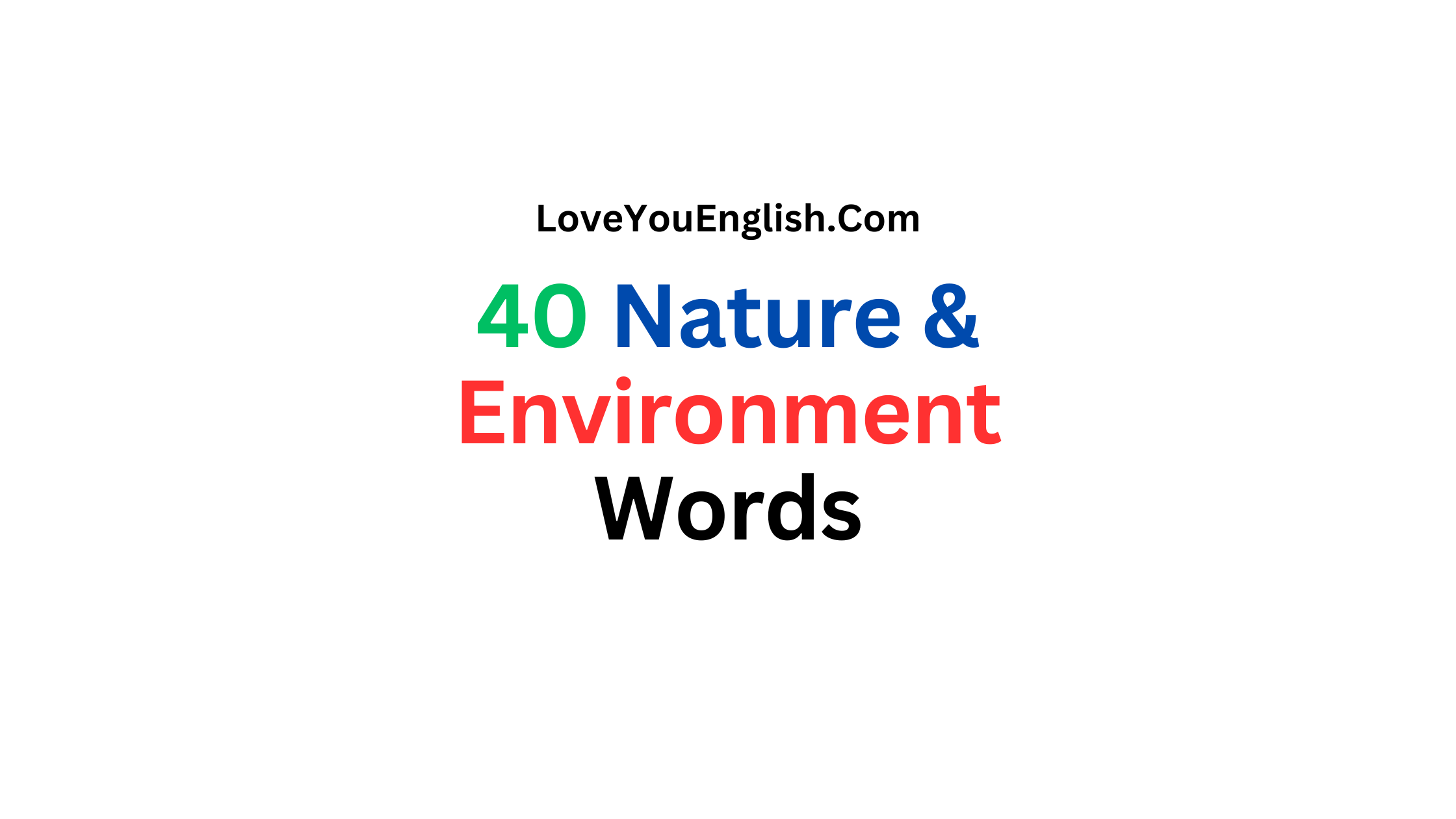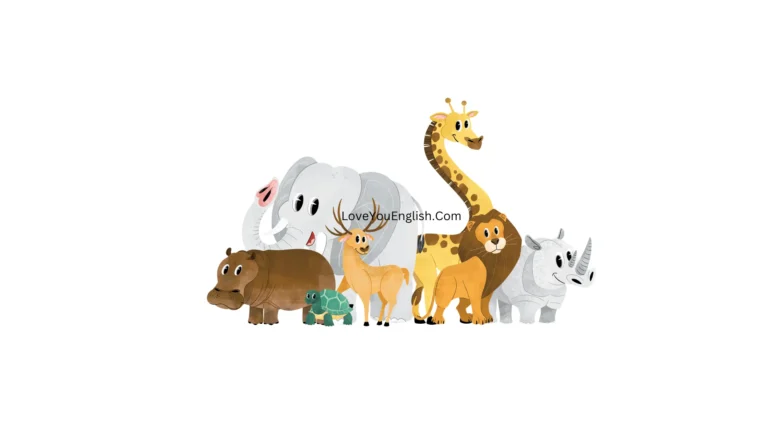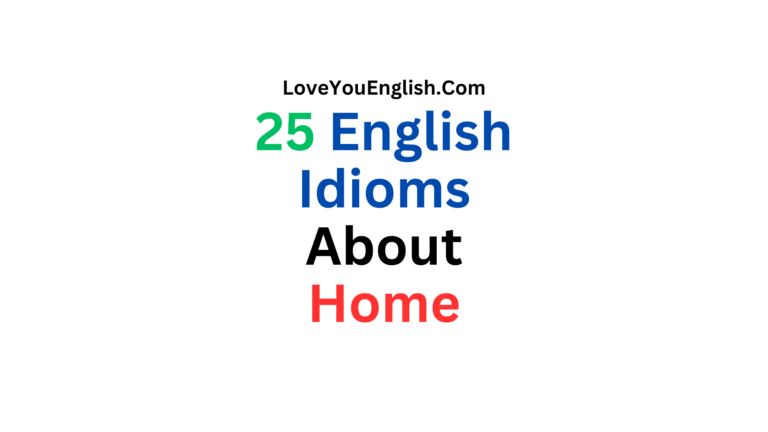50 Nature and Environment Vocabulary Words in English
- Ecosystem – A community of living things and their environment working together.
- Biodiversity – The variety of different types of life found in a particular area.
- Sustainability – Using resources in a way that doesn’t harm the environment for future generations.
- Conservation – Protecting and preserving nature, wildlife, and natural resources.
- Climate – The typical weather patterns in an area over a long period of time.
- Habitat – The natural home or environment of a plant or animal.
- Pollution – The introduction of harmful substances into the environment.
- Renewable – Resources that can be replaced or regrown naturally.
- Endangered – When a type of plant or animal is at risk of becoming extinct.
- Photosynthesis – The process plants use to make food using sunlight, water, and air.
- Decompose – When organic matter breaks down and returns to the earth.
- Watershed – An area of land where all water drains to the same place.
- Organic – Grown or produced without using artificial chemicals.
- Carbon Footprint – The total amount of greenhouse gases produced by human activities.
- Erosion – The process of wind, water, or ice wearing away land.
- Atmosphere – The layer of gases surrounding the Earth.
- Compost – Decayed organic material used to help plants grow.
- Glacier – A huge, slow-moving mass of ice.
- Extinct – When a type of plant or animal no longer exists anywhere on Earth.
- Recycle – To convert waste into reusable materials.
- Greenhouse Effect – The way certain gases trap heat in the Earth’s atmosphere.
- Invasive Species – Plants or animals that are not native and can harm the local environment.
- Migratory – Animals that move from one region to another during different seasons.
- Nitrogen Cycle – The way nitrogen moves between living things and the environment.
- Ozone – A layer in the atmosphere that protects Earth from harmful sun rays.
- Permafrost – Permanently frozen ground found in very cold regions.
- Regeneration – The ability of some living things to regrow lost parts.
- Symbiosis – A close relationship between two different types of living things.
- Topsoil – The top layer of soil that is most important for plant growth.
- Urban Heat Island – A city area that is much warmer than surrounding rural areas.
- Volcanic – Related to volcanoes and their activities.
- Watershed – An area of land where all water flows to the same river or lake.
- Xeriscape – A way of gardening that uses little water.
- Zooplankton – Tiny animals that float in water and are food for many sea creatures.
- Aquifer – Underground layer of rock or soil that holds water.
- Biodegradable – Something that can naturally break down without harming the environment.
- Chlorophyll – The green substance in plants that helps them make food from sunlight.
- Drought – A long period with very little or no rain.
- Echolocation – A method some animals use to find their way by sending out sound waves.
- Fossil Fuels – Energy sources like coal and oil formed from ancient dead plants and animals.
- Geothermal – Heat energy produced inside the Earth.
- Herbivore – An animal that only eats plants.
- Inorganic – Not made from living things or containing carbon.
- Keystone Species – An animal that has a big impact on its ecosystem.
- Microclimate – A small area with different weather conditions from its surroundings.
- Nocturnal – Active during the night.
- Renewable Energy – Energy from sources that can be naturally replaced.
- Tectonic – Related to the movement of Earth’s surface.
- Vegetation – Plant life in a particular area.
- Wildlife – Wild animals living in their natural environment.






